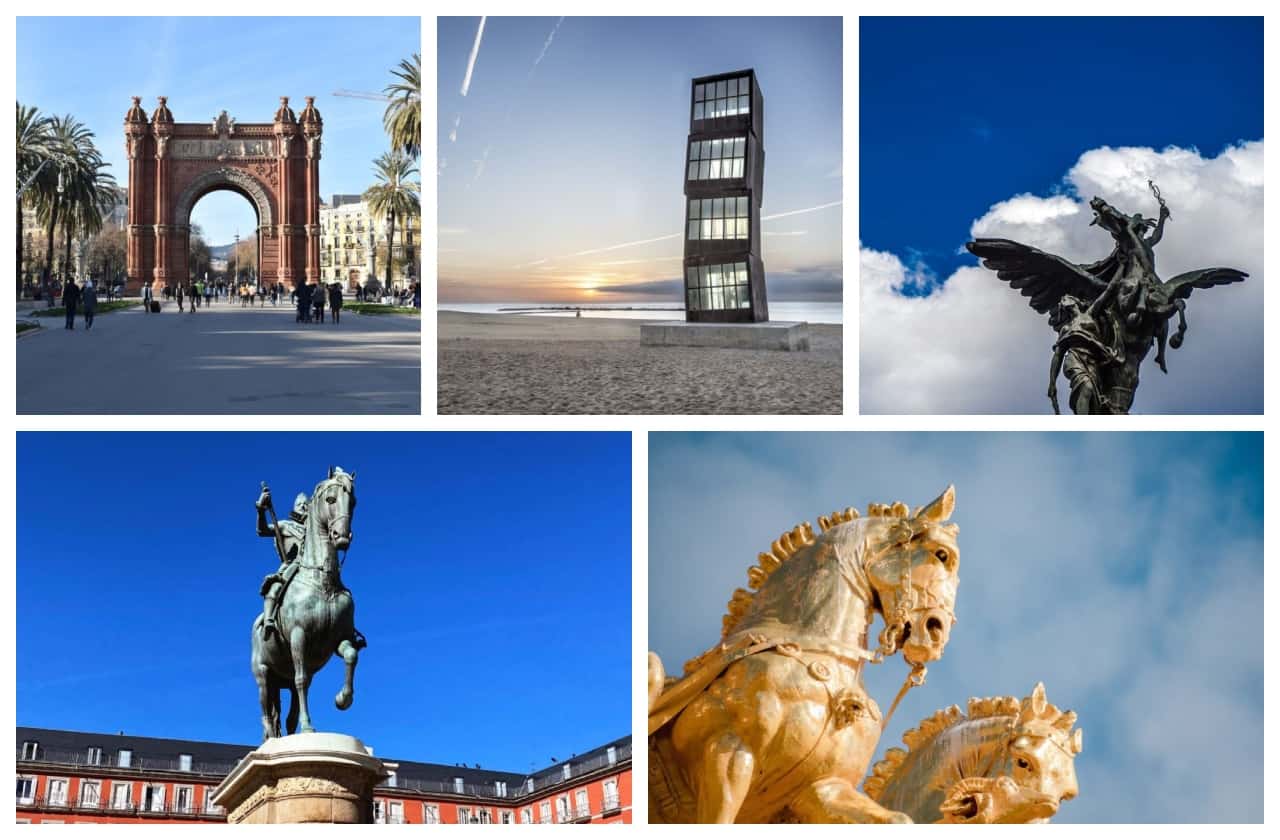Barcelona, with its rich tapestry of history, art, and culture, is a city that speaks through its statues. These statues, some ancient and others avant-garde, whisper tales of bygone eras, artists, and the spirit of Catalonia. And while Barcelona has a myriad to offer, venturing beyond the city limits using high-speed trains introduces travelers to an even wider array of sculpted wonders.
Table of Contents
In the Heart of Barcelona
Barcelona, with its rich tapestry of history, art, and culture, is a city that speaks through its statues. These statues, some ancient and others avant-garde, whisper tales of bygone eras, artists, and the spirit of Catalonia. And while Barcelona has a myriad to offer, venturing beyond the city limits using high-speed trains introduces travelers to an even wider array of sculpted wonders.
Arc de Triomf in Barcelona
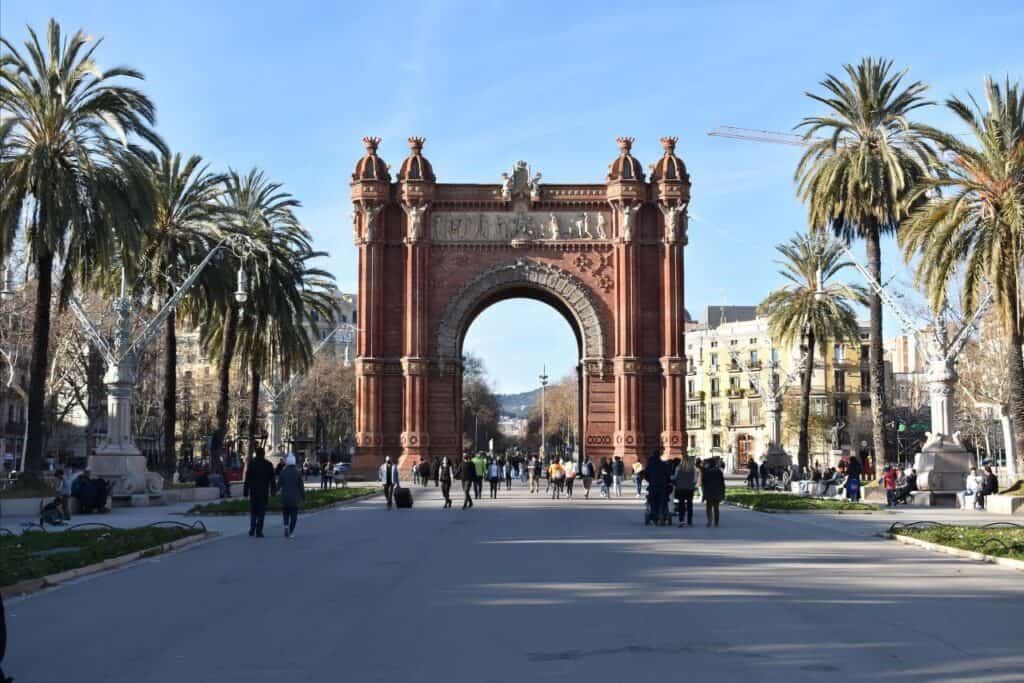
One of Barcelona’s architectural marvels, the Arc de Triomf stands proudly as a gateway to the city’s historic district. Originally constructed as the main entrance for the 1888 Barcelona World Fair, the monument is distinct from other triumphal arches with its reddish brickwork and neo-Mudejar style. For visitors arriving via the train from Madrid to Barcelona, the Arc de Triomf often serves as a magnificent first impression of the city, symbolizing the rich cultural and architectural heritage that awaits them in this vibrant Catalan capital. The intricate carvings and sculptures adorning the arch symbolize the city’s progress in arts and sciences. Located at the top end of the Passeig de Lluís Companys promenade, it’s a popular spot for both locals and tourists, serving as a poignant reminder of Barcelona’s rich heritage and its ongoing journey towards modernity.
The Wounded Star
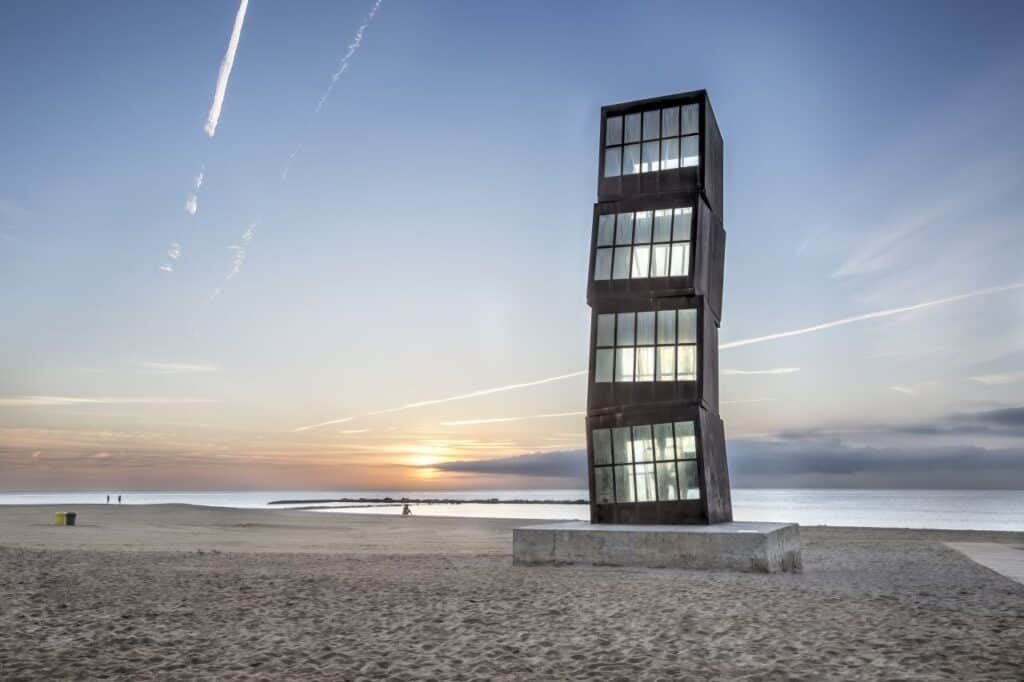
This poignant statue, located on Barceloneta Beach, is often mistaken as a tribute to the city’s fishing heritage. However, Rebecca Horn’s towering piece represents the challenges faced by Barcelona in the modern era. Its strategic placement by the sea allows it to be bathed in the golden hues of sunset, evoking deeper introspection among its observers. As waves crash nearby, the statue stands resilient, embodying the spirit of a city navigating the complexities of contemporary life.
Monument to Francesc Soler i Rovirosa
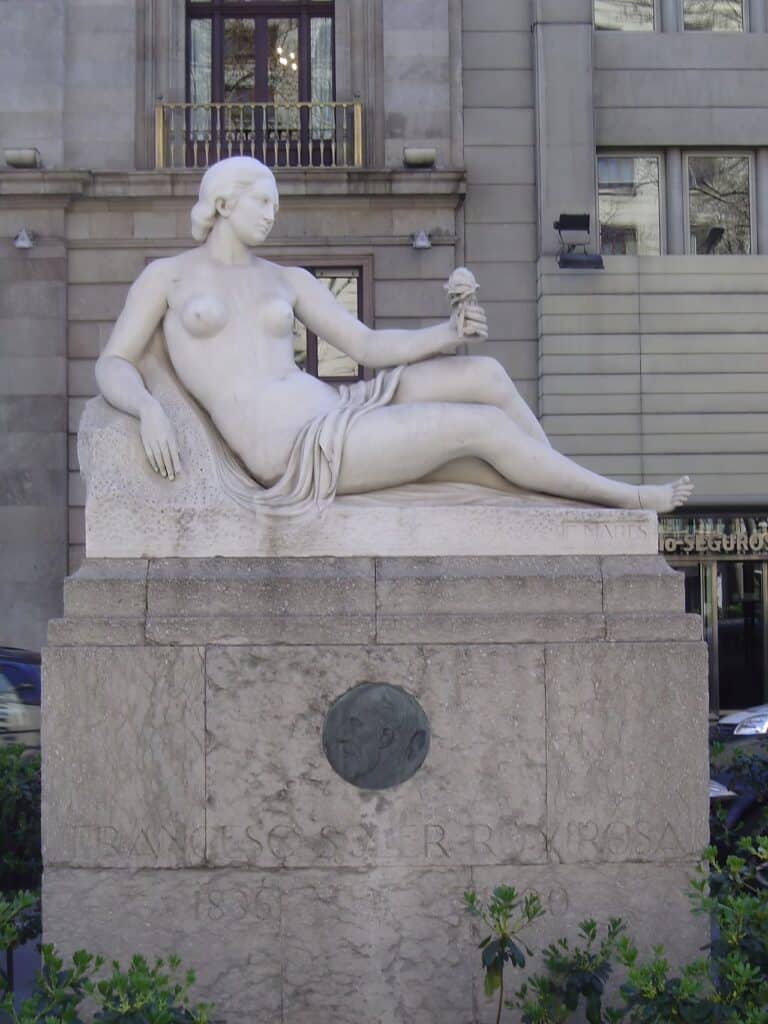
Located in Plaça de Catalunya, this statue pays homage to the architect of the square. Surrounded by fountains and other sculptures, Rovirosa’s likeness stands proudly, a tribute to his architectural contribution to the city. The intricacy of the statue’s design captures the essence of Rovirosa’s work, reflecting his dedication to Barcelona. As dusk settles, the lighting around the monument offers a dramatic ambiance, highlighting the importance of preserving and honoring the city’s historical figures.
Caballo de Parc de la Ciutadella
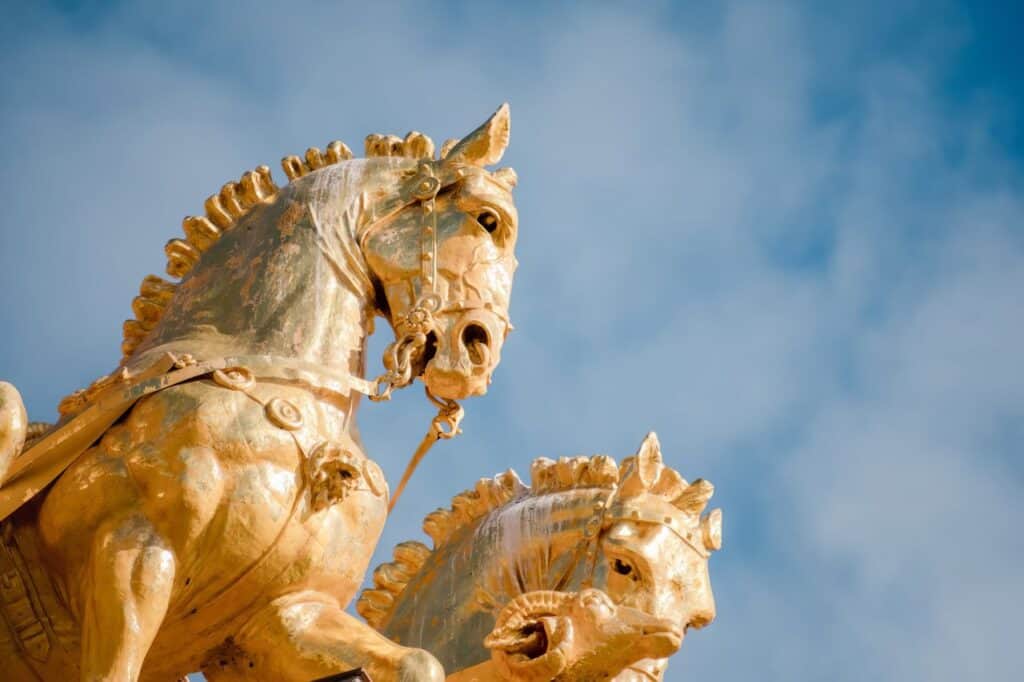
In Barcelona’s Parc de la Ciutadella, the striking statue “Caballo” captivates visitors with its unique artistic expression and historical significance. This impressive bronze sculpture, depicting a horse, is the work of renowned Catalan artist Josep Llimona. Created in the early 20th century, it stands as a testament to the artistic movements of the time, blending elements of modernism with classical influences. Situated amidst the lush greenery of the park, the “Caballo” has become not only a popular spot for tourists and art enthusiasts but also a beloved landmark for the locals, symbolizing the city’s rich cultural heritage and artistic legacy.
Venturing Out of Barcelona
The accessibility of trains in Spain not only enhances the travel experience but also bridges the gap between major urban centers and lesser-known locales. These rapid connections mean that travelers can have breakfast in Barcelona, admire midday sculptures in Zaragoza, and still make it back in time for a tapas dinner in the Catalan capital. This seamless blending of transport and art exploration showcases Spain’s commitment to preserving its heritage while advancing in modern infrastructure.
Felipe III Statue: Madrid’s Centrepiece of Plaza Mayor
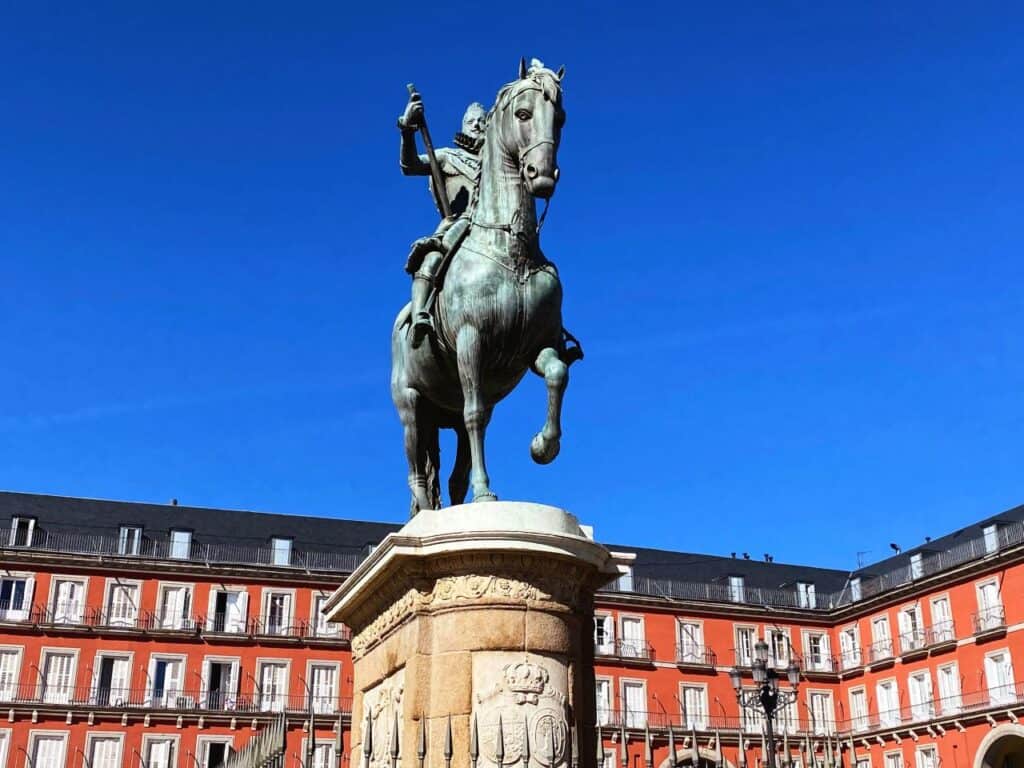
Presiding over the historic Plaza Mayor in Madrid, the equestrian statue of Felipe III stands as an imposing testament to the city’s rich past. Commissioned by the Duke of Florence, Cosimo de Medici, and sculpted by the illustrious Italian artists Pietro Tacca and Giambologna in the early 17th century, the statue was gifted to the Spanish King in 1616. Since its installation in the plaza in 1848, it has become an iconic symbol of the city, frequently visited by tourists and locals alike. The square itself, surrounded by uniform three-story buildings with 237 balconies overlooking the plaza, serves as a backdrop to the statue, setting a regal and historical ambiance that takes visitors back in time. The Felipe III Statue is not just a work of art; it’s a reminder of Madrid’s enduring legacy and its pivotal role in Spain’s history.
Statue of Agriculture
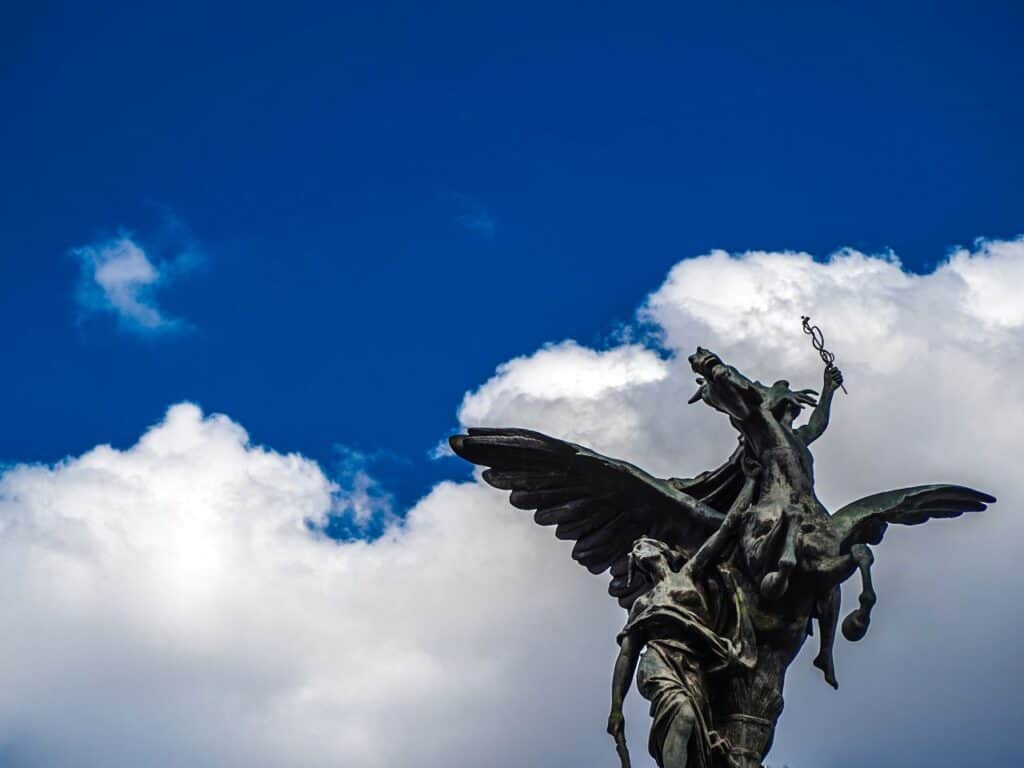
The Statue of Agriculture in Madrid stands as a significant emblem of Spain’s agrarian history and its enduring connection to the land. This majestic sculpture, with its detailed depiction of agricultural motifs, celebrates the country’s long-standing relationship with farming and the vital role it has played in shaping Spanish culture and society. Located in a prominent area of Madrid, the statue is not only a tribute to the past but also a harmonious blend with the urban environment, symbolizing the balance between nature and progress. The intricate craftsmanship of the statue captures the essence of traditional agricultural practices, making it a poignant reminder of the foundational elements that sustain and enrich life.
Valencia’s Neptune
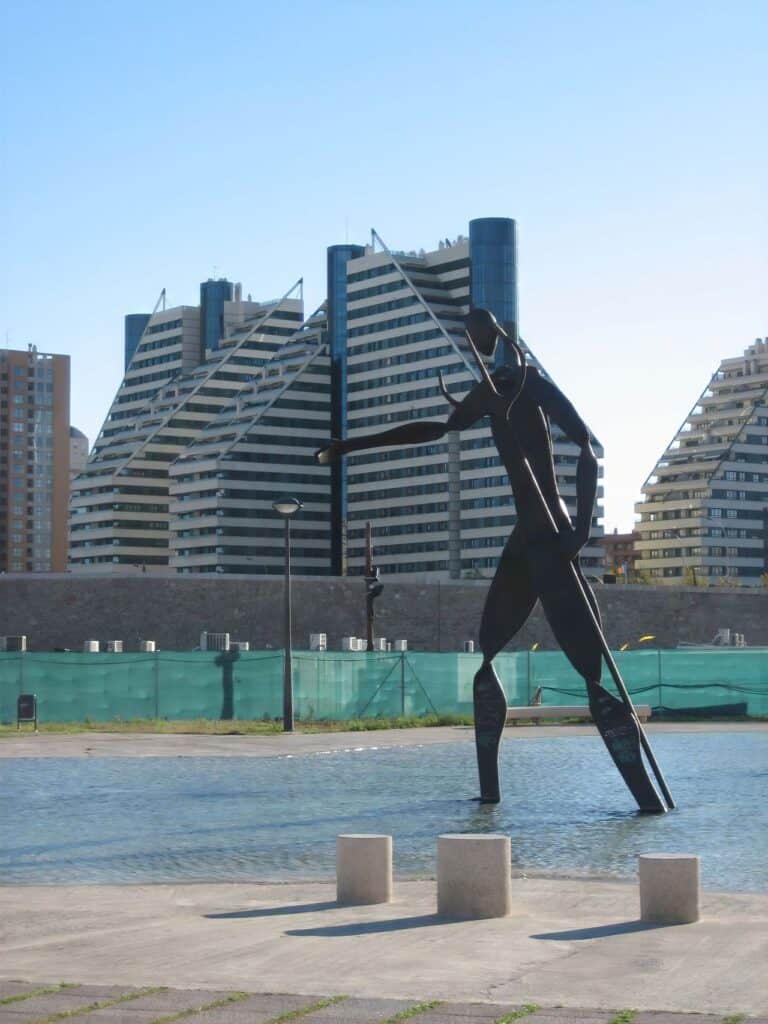
Located in the Turia Gardens, this massive statue of Neptune, the god of the sea, reigns supreme, trident in hand. It’s a striking reminder of Valencia’s maritime heritage. As one strolls through the gardens, the grandeur of the statue offers a moment of reflection on the city’s historical connections to the sea. Its detailed craftsmanship and imposing size make it a favorite spot for both tourists and locals, capturing the essence of Valencia’s coastal legacy.
Parque Grande de José Antonio Labordeta, Zaragoza, España
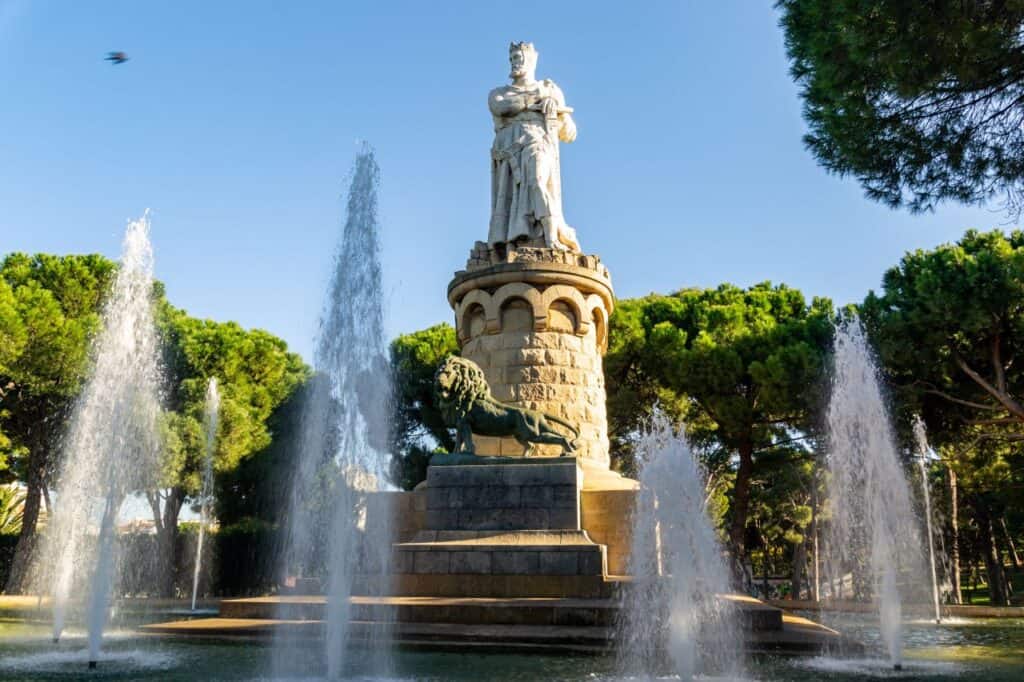
Parque Grande José Antonio Labordeta, a vast and verdant oasis in the heart of Zaragoza, Spain, stands as a testament to urban green spaces’ transformative power. Named after the revered Spanish singer, songwriter, and politician José Antonio Labordeta, the park is a favorite amongst locals and visitors for its lush landscapes, scenic walking paths, and tranquil atmosphere. It features a diverse array of flora, spacious lawns, and charming water features, making it an ideal spot for leisurely strolls, picnics, and family outings. Additionally, the park is home to several monuments and sculptures, children’s play areas, and sports facilities, offering a range of activities that cater to all ages and interests, truly embodying the spirit of community and recreation.
Seville’s Monument to Tolerance
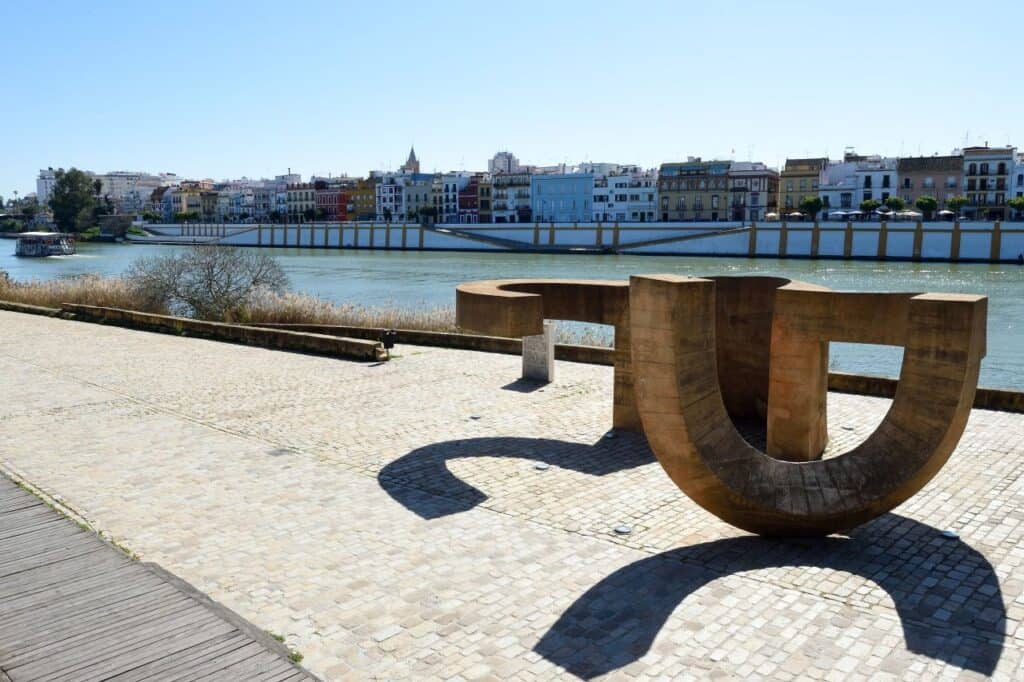
Designed by Eduardo Chillida, this sculpture along the Guadalquivir River promotes a universal message of understanding and peace. Its striking abstract form, overlooking the tranquil waters, has become a poignant symbol in the city, encouraging reflection and dialogue among its viewers on the importance of tolerance in today’s world.
A Continuing Journey
The journey to discover Spain’s statues is limitless. Each piece, whether standing in the heart of a bustling square or tucked away in a quiet alcove, has a story to tell, an artist to honor, or a tradition to uphold. The country’s efficient network of trains ensures that no statue, however remote, is out of reach.
Whether you’re wandering the busy streets of Barcelona or venturing to other Spanish cities, there’s always a statue waiting to be discovered, a silent sentinel of Spain’s rich and diverse heritage. From ancient statues to modern body art like tattoos, these works of art serve as a bridge, connecting past and present, local and visitor, in a shared experience of art and history.
So, next time you find yourself in Spain, pause, look around, and listen to the stories these statues have to tell.
